Books
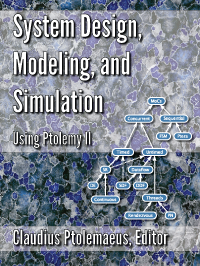
|
Claudius Ptolemaeus, Editor
System Design, Modeling, and Simulation using Ptolemy II,
Ptolemy.org, 2014.
This book is a definitive introduction to models of computation for the design of complex, heterogeneous systems. It has a particular focus on cyber-physical systems, which integrate computing, networking, and physical dynamics. The book captures more than twenty years of experience in the Ptolemy Project at UC Berkeley, which pioneered many design, modeling, and simulation techniques that are now in widespread use. All of the methods covered in the book are realized in the open source Ptolemy II modeling framework and are available for experimentation through links provided in the book.
The book is suitable for engineers, scientists, researchers, and managers who wish to understand the rich possibilities offered by modern modeling techniques. The goal of the book is to equip the reader with a breadth of experience that will help in understanding the role that such techniques can play in design.
|
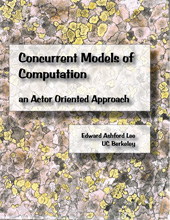
|
Edward A. Lee, Concurrent Models of Computation: An Actor-Oriented Approach (Draft version).
This very preliminary text covers the theory of concurrent models of computation (MoCs) with applications to software systems, embedded systems, and cyber-physical systems modeling. Topics include analysis for boundedness, deadlock, and determinacy; and formal semantics (fixed point semantics and metric-space models). The MoCs covered include process networks, synchronous/reactive, concurrent state machines, dataflow, rendezvous (e.g. CSP, CCS), time-triggered models, discrete-events, and continuous-time models. Compositions of MoCs, such as hybrid systems and Statecharts, are also be included.
|
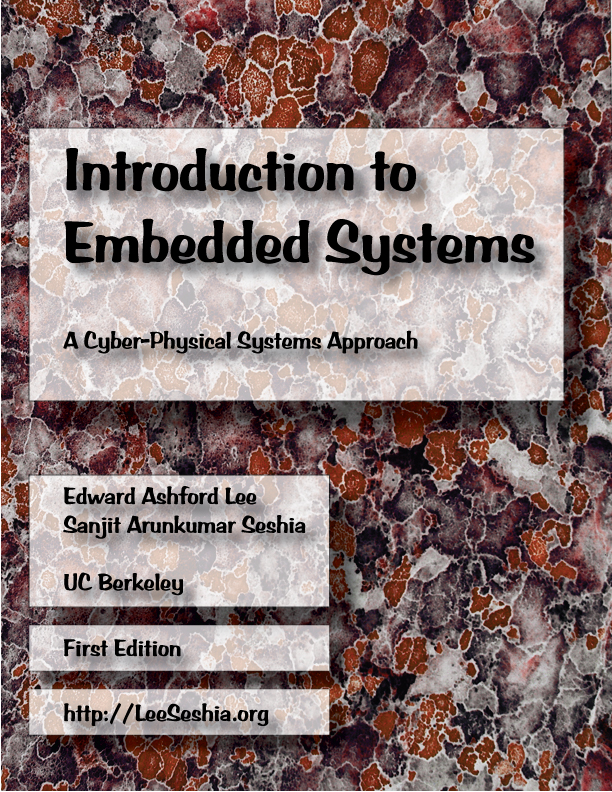
|
E. A. Lee and S. A. Seshia, Embedded Systems -- A Cyber-Physical Systems Approach, LeeSeshia.org, 2011.
This book strives to identify and introduce the durable intellectual ideas of embedded systems as a technology and as a subject of study. The emphasis is on modeling, design, and analysis of cyber-physical systems, which integrate computing, networking, and physical processes.
The book is intended for students at the advanced undergraduate level or the introductory graduate level, and for practicing engineers and computer scientists who wish to understand the engineering principles of embedded systems.
|
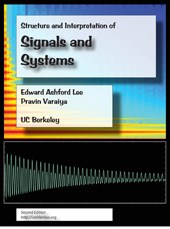
|
E. A. Lee and P. Varaiya, Structure
and Interpretation of Signals and Systems, Second Edition, LeeVaraiya.org, 2011.
This book provides an accessible introduction to signals and systems for
electrical engineering, computer engineering, and computer science students,
and is based on several years of successful classroom use at the University
of California, Berkeley. The material starts with an early introduction
to applications, well before students have built up enough theory to fully
analyze the applications. This motivates students to learn the theory
and allows students to master signals and systems at the sophomore level.
The material motivates signals and systems through sound and images, as
opposed to circuits, and as such calculus is the only prerequisite.
|
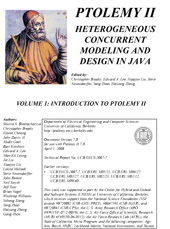
|
Ptolemy Team, Heterogeneous Concurrent Modeling and Design in
Java, Software Documentation, 2008.
This three volume provides a users manual and software documentation for
the Ptolemy II system. Volume I describes how to construct Ptolemy II models.
It includes a description of the project and overview of the software
architecture, tutorials on using various parts of the system, and descriptions of how to extend the software.
Volume 2 describes the software architecture of Ptolemy II, and volume 3 describes the domains, each
of which implements a model of computation.
|




